The importance of Rumen pH and Rumen Buffering
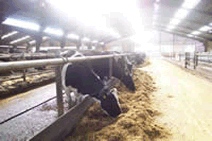 Cow
Health - Many of the health problems with modern dairy cows are primarily
triggered by, associated with or are directly caused by acidosis. Acidois can also be a common
cause of reduced milk yields and low butterfat %.
Cow
Health - Many of the health problems with modern dairy cows are primarily
triggered by, associated with or are directly caused by acidosis. Acidois can also be a common
cause of reduced milk yields and low butterfat %.
These cow health issues include lameness, mastitis, high somatic cell counts (SCC), left side displaced abomasum (LDA), impaired liver function, loss of body condition, negative energy balance, infertility, milk yield below potential and high culling rates.
Most cows at some point in their lactation suffer from acidosis
Acidosis is caused by cows eating high levels of concentrates, starch and high D-value forages. As rumen pH falls, Streptococcus bovis increases causing the pH to fall further. At low pH levels lactobacillus produce high levels of lactic acid producing a highly acidic environment. Often extremely high levels of E. coli are also present along with scours. Liver abscesses may also result. As rumen pH falls from 6.4 pH to 5.6 pH fibre digestion will fall by around a third from 55% down to 35%. This can equate to around 2.5 litres of milk per day.
Acidosis has consequences for performance, health, fertility and feed efficiency so it is essential to protect the rumen. Ideally the rumen should be kept within the range of 6.4 - 7.0 pH which is optimum for rumen microorganisms to thrive.
 First and foremost acidosis can only be controlled by well designed diets
with emphasis on efficient rumen function. Good quality high D-Value forage
is essential. Over feeding of fast fermentable starch and excessive concentrate
to forage ratios should be avoided.
First and foremost acidosis can only be controlled by well designed diets
with emphasis on efficient rumen function. Good quality high D-Value forage
is essential. Over feeding of fast fermentable starch and excessive concentrate
to forage ratios should be avoided.
Equally all diets must contain sufficient floaty, scratchy, mature long fibre in order to form a rumen mat and to stimulate cudding and rumen mixing. Providing straw as the long fibre is only really effective where the straw is cleanly chopped to between 1" and 2" long to avoid sorting and rejection by the cow.
Rapid diet changes involving sudden increases in concentrates must also be avoided especially post calving. This is all fine in theory, but in practice cows are usually group fed with a single total mixed ration (TMR), and cows do usually have to be moved directly from dry cow diets to high energy peak lactation diets involving sudden diet changes at a critical time often with long lasting consequences.
There are also limitations with forages, wet acid silages, high starch forage maize, and grazed grass. The three main causes of ruminal acidosis are excessive intake of rapidly fermentable carbohydrates, inadequate ruminal buffering and feeding a too highly fermentable diet resulting in low rumen pH. You may have previously thought that acidosis only occurs when cows are fed winter rations but it is also a problem on grazed grass.
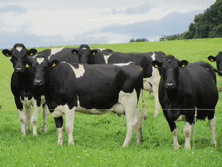 A study carried out by University College Dublin in 2006 showed 53% of cows had a rumen pH less
than 5.8, which is too low for optimal feed digestion and intake, whilst 11% had a rumen pH less than
5.5, which meant they had SARA. These were cows 80 to 150 days in milk being fed grazed grass. Remember,
high D value grass can have sugar percentages in the range of 20% to 40%, which is similar to feeding
a total diet with 63% cereal! Ideally, the rumen environment needs to be kept in the optimal pH range
of 6.5 to 7.0.
A study carried out by University College Dublin in 2006 showed 53% of cows had a rumen pH less
than 5.8, which is too low for optimal feed digestion and intake, whilst 11% had a rumen pH less than
5.5, which meant they had SARA. These were cows 80 to 150 days in milk being fed grazed grass. Remember,
high D value grass can have sugar percentages in the range of 20% to 40%, which is similar to feeding
a total diet with 63% cereal! Ideally, the rumen environment needs to be kept in the optimal pH range
of 6.5 to 7.0.
Research shows that grazing cows do suffer from acidosis
Yes, cows do suffer from acidosis at grass. Ever considered why cows scour at turnout? Rumen pH on grazed grass can be as low as 5.4 pH.
Good diet formulation is essential. But even if we do everything right it isn't enough!
There are considerable benefits to be gained from feeding an effective Live Yeast Supplement together with a Rumen Buffer
Feeding for Rumen Efficiency - More than anything else performance of high yielding dairy cows depends on the rumen functioning efficiently. Feeding systems that maximise microbial growth and production will maintain high milk yields, safeguard herd health and maximise profitability. Rumen microbes are essential to digest the forage, which makes up a large part of the cows diet. These rumen microbes produce volatile fatty acids and microbial protein and in doing so can provide up to 75% of the energy and up to 60% of the amino acids required by the high yielding cow.
For the rumen to work efficiently and effectively the rumen microbes need a steady supply of fermentable energy and degradable protein and most importantly they need a stable rumen pH between 6.0 and 7.0 pH. Within this pH range the rumen is at its most efficient.
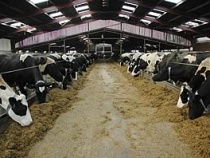 The
rumen microbes ferment starches and sugars to form organic acids, propionate
and other volatile fatty acids (VFA). This is not a problem if the rumen
stays above 6.0 pH. If on the other hand these acids build up in the rumen
then the pH of the rumen drops.
The
rumen microbes ferment starches and sugars to form organic acids, propionate
and other volatile fatty acids (VFA). This is not a problem if the rumen
stays above 6.0 pH. If on the other hand these acids build up in the rumen
then the pH of the rumen drops.
The fall in pH has two effects. Firstly, the rumen stops moving, becoming atonic. This depresses appetite and production. Secondly, the change in acidity changes the rumen flora, with lactic acid-producing bacteria taking over. They produce more acid, making the acidosis worse. The increased acid is then absorbed through the rumen wall, causing metabolic acidosis.
When acidosis occurs the rumen microbes use additional energy to get rid of excess hydrogen ions. This in turn results in fewer less active microbes being available to ferment the cows diet.
High yielding cows often experience a few hours of high rumen acidity during the day. If this situation is corrected, milk production can be increased.
Sub Acute Rumen Acidosis (SARA) - is a very common and much under rated metabolic disorder which has a significant effect on milk production and herd health. SARA occurs when the pH of the cow's rumen drops below 5.8. The cow's dry matter intake declines, fibre digestibility and rumen microbial protein production is reduced, butterfat % declines, and milk production suffers.
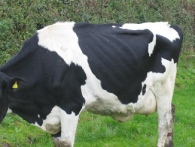 Sub acute rumen acidosis or SARA reduces dry matter intakes, fibre digestion,
milk yields and butterfat production. Dairy herds experiencing SARA will
have a decreased efficiency of milk production, impaired cow health and
high rates of involuntary culling.
Sub acute rumen acidosis or SARA reduces dry matter intakes, fibre digestion,
milk yields and butterfat production. Dairy herds experiencing SARA will
have a decreased efficiency of milk production, impaired cow health and
high rates of involuntary culling.
If acidosis occurs in one cow, it usually indicates that many other cows in the herd are suffering from sub-clinical acidosis. Solutions have to be for the whole herd not the individual animal. Many diseases have been linked to acidosis. For some, such as liver abscesses, the evidence is very strong.
All too often farmers and nutritionists assume that there
is no acidosis problem unless intakes severely decline, butterfat (%) declines,
and laminitis is apparent.
This is not the case.
Diagnosing sub clinical acidosis in the field is a challenge. The following signs can be useful in identifying SARA, but can vary and may be caused by other factors:
- Cows experiencing laminitis and foot problems, especially first lactation and fresh cows
- Moving dry cows to a high concentrate TMR after calving without a transition diet
- Increasing concentrate intake after calving faster than 0.75kg per day
- High concentrate : forage ratio
- Cows fed more than 4.5kg of concentrate per feed
- Overall concentrate feed rates higher than 0.38kg/litre
- Low levels of scratchy structural forage fibre greater than 1" long in the diet
- Less than half of the cows chewing their cuds
- Average cudding rate less than 60 chews per cud
- Starch levels greater than 15% or combined sugar and starch greater than 23% in the diet
- Dung appears loose, foamy and bubbly and inconsistent across the herd
- Poor rumen fill and with variable feed intakes
- Individual cows off feed for no apparent reason
- Negative energy balance, excessive weight loss and loss of body condition score
- Dull, rough, stary damp coats
- Tail swishing and dirty backs
- Individual cows with low butterfat % and high milk protein %
- Cows selectively consume coarse long forage (straw or hay)
- Hyper ventilation or rapid breathing
- Excessive intakes of free access salt or minerals or cows lick urine or soil
- Left side displaced abomasums, ketosis, sick cows, general ill health
- High cell counts, mastitis, reduced immune response, poor fertility
- Lameness and laminitis - haemorrhages or red discolouration in the hoof
- Hoof surfaces have horizontal ridges or lines
Efficient Rumen Function = Healthy Cows = High Feed Efficiency
= High Yields = Profitability
Managing Rumen pH for Improved Feed Efficiency
Transition Management and Acidosis - Early lactation is where acidosis is most common, most severe and most damaging to cow health, and this is where acidosis can have the most profound effect on future fertility and milk output. 30 years ago when most cows were fed parlour cake and silage, few farmers would ever consider feeding a new calved cow more than 10kgs of concentrates the day after calving.
Now with modern total mixed rations (TMR) it is common
practice on many farms to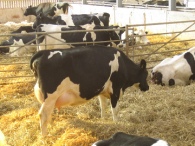 move cows from a low energy high forage diet to
the high yield group TMR with little thought to the dire consequences for
the cow.
move cows from a low energy high forage diet to
the high yield group TMR with little thought to the dire consequences for
the cow.
The transition cow undergoes massive physiological changes to the rumen, intestines and liver during the 3 - 6 weeks pre and post calving. The diet that we feed to the cow following digestion all has to be absorbed through the rumen and intestinal wall and processed by the liver.
The rumen wall is covered in papillae which provide the massive surface area necessary to absorb sufficient nutrients to meet the requirements of the high yielding cow. These papillae regress on high forage diets during the dry period. Sudden introduction of excess starchy concentrates post calving usually results in acidosis as a result of excess acid production and can slough off the rumen papillae reducing the surface area for absorption of nutrients. The result is reduced dry matter intake, often resulting in more severe acidosis, metabolic disorders, ketosis, loss of body condition, infertility, reduced yields, lameness, mastitis high cell counts.
Acidosis is a disaster for the fresh calved cow
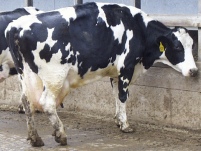 Prevention
of Acidosis (SARA) - Transition diets should be designed to introduce
concentrates at least 3 - 4 weeks before calving and where possible to increase
concentrates by no more than 0.75kg per day after calving.
Prevention
of Acidosis (SARA) - Transition diets should be designed to introduce
concentrates at least 3 - 4 weeks before calving and where possible to increase
concentrates by no more than 0.75kg per day after calving.
Where possible a 3 week post calving group is very beneficial. Avoid high concentrate to forage ratios and avoid feeding excessive levels of starch and sugars. Always feed sufficient long scratchy fibre in the diet. Where cows in early lactation are under performing with excessive weight loss as a result of SARA feeding more concentrates will make matters worse.
In all herds showing any acidosis there needs to be a full assessment of the diet
by an experienced nutritionist
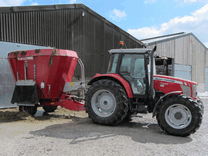 Forage, Fibre and Concentrates - The first approach in maintaining stable
rumen pH and good rumen efficiency must always be from designing a sound diet. Diet changes should always
be made gradually over a few days to allow cows rumens to adapt. This is particularly important with
fresh calved cows, where concentrates should be introduced well before calving and increased steadily
post calving.
Forage, Fibre and Concentrates - The first approach in maintaining stable
rumen pH and good rumen efficiency must always be from designing a sound diet. Diet changes should always
be made gradually over a few days to allow cows rumens to adapt. This is particularly important with
fresh calved cows, where concentrates should be introduced well before calving and increased steadily
post calving.
All diets require a proportion of scratchy, floaty fibre of at least 1 - 2 cm in length in order to form a rumen matt and to stimulate rumen motility and cudding. There also needs to be a balance between forage and concentrates and between fast fermentable and slowly fermentable sources of energy.
In effect this means limiting levels of concentrates fed with very highly digestible forages and limiting the proportion of fermentable starch, sugars and cereals in the concentrate when feeding concentrates at high levels. Adequate but not excessive levels of degradable protein will also be required for efficient rumen fermentation.
Poorly designed diets result in many problems.
Using an experienced nutritionist
can be hugely beneficial
Rumen Buffers - Traditionally rumen buffers have been used in the main where a specific acidosis problem has been identified, often as a short term measure. It has now become widely recognized that the inclusion of rumen buffers as standard in TMR's particularly in early lactation and high yielding dairy diets have a valuable and cost effective role to play. We recommend including
 Ostrea
Oyster Shell Flour in
dairy diets as standard. Ostrea is our view the most effective rumen buffer available in the UK. It has
clear advantages over otherbuffers
both in terms of efficacy and cost. Ostrea Crushed Oyster
Ostrea
Oyster Shell Flour in
dairy diets as standard. Ostrea is our view the most effective rumen buffer available in the UK. It has
clear advantages over otherbuffers
both in terms of efficacy and cost. Ostrea Crushed Oyster 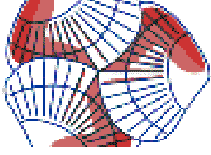 Shell flour is a source of chalk derived from
natural shell banks in the North Sea.
Shell flour is a source of chalk derived from
natural shell banks in the North Sea.
Ostrea has a natural ability to minimise wide fluctuations in rumen pH and to maintain the rumen within the optimum range. In addition Ostrea has the important advantage of slow release, avoiding rapid fluctuations in rumen pH and resulting in a much more stable rumen pH over time.
The result of feeding Ostrea is increased rumen efficiency, higher dry matter intakes, increased output with improved feed efficiency together with better animal health. For more information click here Rumen Buffers and Ostrea.
Digestion in the rumen is most efficient within a stable
pH
range between 6.0 and 7.0
 Live
Yeast Supplements - Most cows at some point in early lactation suffer from a degree of sub-acute
rumen acidosis. Acidosis has consequences for performance, health, fertility and feed efficiency so it
is essential to protect the rumen. Work has shown that rumen buffers are more effective when fed with live
yeast, which suggests that both should be included in the ration. It is very worth while to feed
Biocell live yeast from 3-4 weeks pre-calving through lactation and feeding a rumen buffer from calving
onwards. Rumen buffers and live yeast supplements have completely different modes of action but are complimentary.
Live
Yeast Supplements - Most cows at some point in early lactation suffer from a degree of sub-acute
rumen acidosis. Acidosis has consequences for performance, health, fertility and feed efficiency so it
is essential to protect the rumen. Work has shown that rumen buffers are more effective when fed with live
yeast, which suggests that both should be included in the ration. It is very worth while to feed
Biocell live yeast from 3-4 weeks pre-calving through lactation and feeding a rumen buffer from calving
onwards. Rumen buffers and live yeast supplements have completely different modes of action but are complimentary.
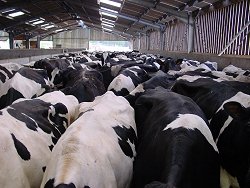 Yeast metabolises
lactate, lifts rumen pH and stimulates growth and activity of rumen microbes increasing rumen fermentation
rates, removing lactic acid and improving feed efficiency. Rumen buffers directly neutralize acids in
the rumen and buffer to provide a stable pH for rumen microbes to thrive. For more information click
here Yeast Supplements.
Yeast metabolises
lactate, lifts rumen pH and stimulates growth and activity of rumen microbes increasing rumen fermentation
rates, removing lactic acid and improving feed efficiency. Rumen buffers directly neutralize acids in
the rumen and buffer to provide a stable pH for rumen microbes to thrive. For more information click
here Yeast Supplements.
The combined cost of using a rumen buffer in addition to yeast as standard in dairy diets is less that of 0.5 litre of milk but the benefits are massive. Buffers are beneficial even at grass where the rumen can be as low as 5.4 pH. With this in mind there is good reason to include rumen buffers in all dairy diets.
We now recommend using a Rumen Buffer as well as Biocell Yeast
in all our Dairy Diets
Contact Richard Webster for further information on feeding dairy cows, using rumen buffers, yeast supplements, feed efficiency, milk output, health and fertility.
RWN offers a full nutritional support package free of charge to customers along with the most extensive range of high quality feed inputs available
